Feb 14. 2025 - Latest News

The Future Ecologies Group at the SUSTech School of Design takes a cross-disciplinary research approach to develop new intersections of the natural and the artificial in future built environments. Led by Prof. Christiane M. Herr (Dipl.-Ing Arch Kassel, MArch HKU, PhD HKU, Dr.-Ing. Kassel), our research projects employ science and advanced technologies in the design of high-rise buildings for future high-density cities, including sustainable architectural technologies, structural and material aspects of green building design, integrated facades and new ecological models of artificial environments. A recent focus area is the integration of high-rise buildings with the emerging low-altitude economy and, in particular, drone delivery systems and their impact on future architecture and urban environments. For those interested in applying for RA and postdoc positions in the Future Ecologies Group, please contact: cmherr@sustech.edu.cn with a CV and portfolio.
This year, the Future Ecologies group will showcase our work at the high-level conference CAADRIA2025, the annual conference of the Association for Computer-Aided Architectural Design Research in Asia. With an acceptance rate of only 25% this year, CAADRIA has become one of the most competitive conferences in the field of computer-aided architectural design research. I am very happy to announce that the Future Ecologies Group will present 4 papers in Tokyo this March! Here is a short preview of the papers.
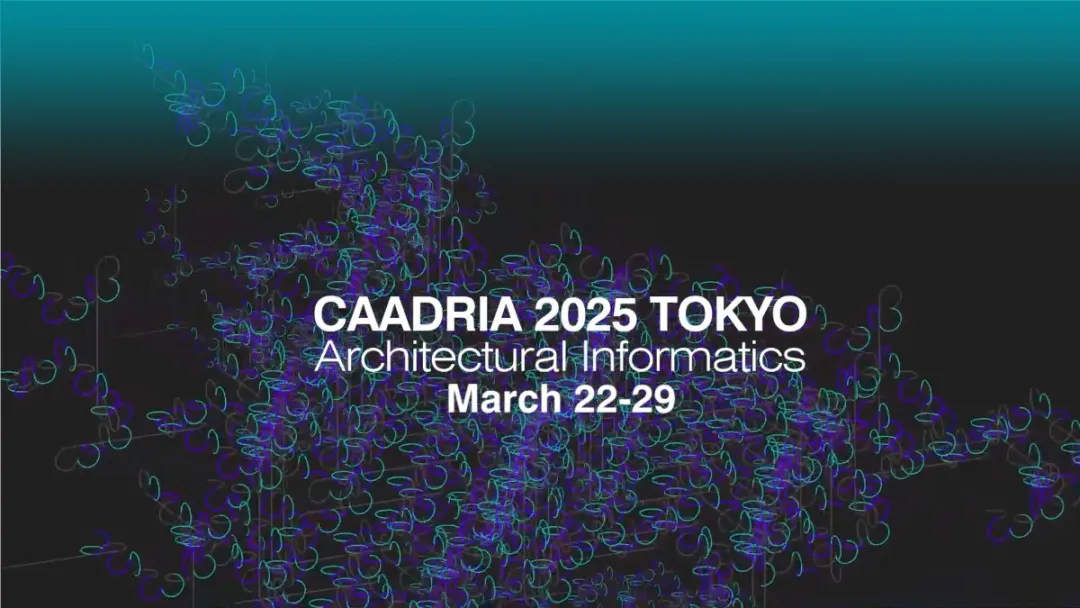
This year, the Future Ecologies group will showcase our work at the high-level conference CAADRIA2025, the annual conference of the Association for Computer-Aided Architectural Design Research in Asia. With an acceptance rate of only 25% this year, CAADRIA has become one of the most competitive conferences in the field of computer-aided architectural design research. I am very happy to announce that the Future Ecologies Group will present 4 papers in Tokyo this March! Here is a short preview of the papers.

Title:
Supporting Local Biodiversity at the Façade Scale: A Data-enriched Multi-layered CA model to support Ecological Façade Designs
Author:
Yiming Liu, Sihao Chen and Christiane M. Herr
Keywords:
Cellular automata, multi-layered modelling, ecological façade design, control strategies, generative architectural design
Abstract:
High-density built-up areas are associated with natural habitat fragmentation and ecological decline, alongside significant negative impacts on environmental and human health. With existing ecological design strategies focusing on adapting plant characteristics to local environments, the dynamic adaptability of plants is often neglected, and their ecological potential is underutilised. This paper introduces a multi-layered Cellular Automata (CA) method designed to integrate ecological objectives into the façade design of green buildings while considering environmental data and building attributes. This novel data-enriched multi-layered CA framework applies constraints to the system by identifying controllable and uncontrollable factors within the design elements, thereby offering a certain level of control over the inherent unpredictability of CA dynamics. The CA-based model organises built environmental data and building attributes into a multi-layered structure, combining multiple criteria to model plant habitats and ecological performances. Results demonstrate how CA can support the environmental factors to model and evaluate ecologically sensitive built environments at the architectural scale. The CA framework integrates building form with ecological variables but also adapts to dynamically changing environments, contributing a new perspective to the design of sustainable facades to promote ecology and biodiversity at the urban scale.
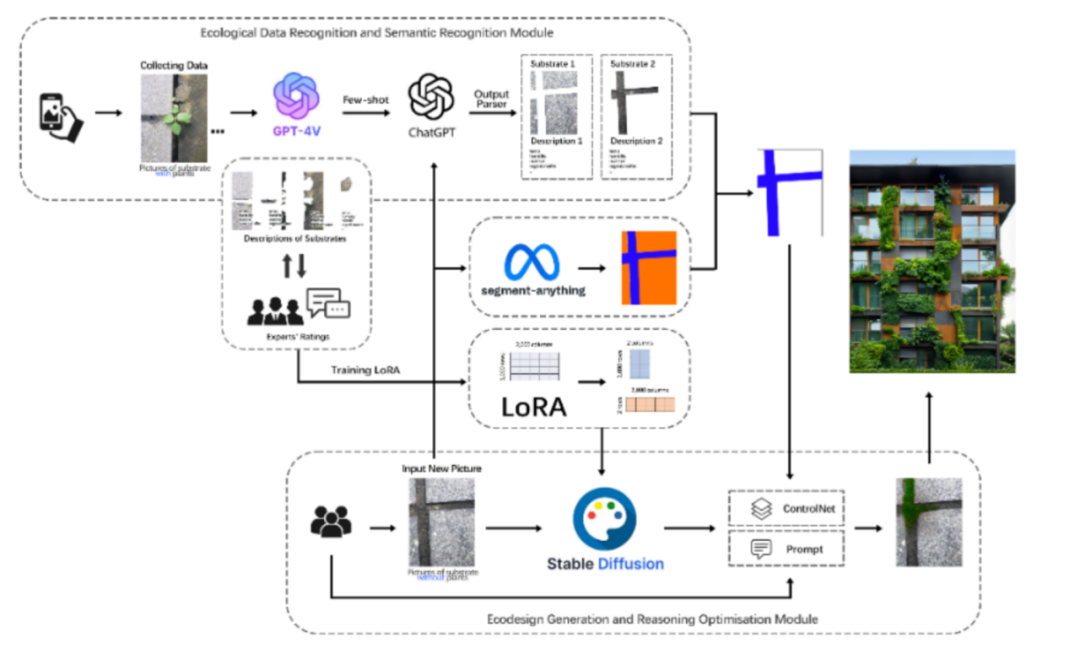
Title:
Applying Multimodal Large Language Models in Ecological Facade Design: Enhancing local viability and ecological feasibility of design proposals
Author:
Daxu Wei and Christiane M. Herr
Keywords:
Ecological facade design, Multimodal Large Language Models (MLLM), Generative AI, Ecosystem integration, Ecological performance
Abstract:
This study focuses on building facades as vital interfaces for urban ecosystems and addresses the limited integration of ecological expertise in architectural design through multimodal AI. While facades hold significant potential for supporting local biodiversity, existing tools often fail to align ecological and architectural objectives, particularly regarding local viability. To bridge this gap, we propose a novel system leveraging GPT-4 Vision and Latent Diffusion to assist non-expert designers in generating site-specific, ecologically feasible facade designs. The system combines image-text data processing, plant suitability prediction, and substrate analysis to deliver adaptive design solutions tailored to urban microhabitats. By incorporating local plant data, fine-tuning with LoRA (Low-Rank Adaptation) models, and enhancing image outputs through ControlNet.The results indicate that the system demonstrated satisfactory performance in terms of realism, diversity, and ecological adaptability but requires improvement in locality, particularly in generating specific plant species. This interdisciplinary approach advances the application of MLLM in ecological facade design, lowering the threshold for ecological design, enabling a broader range of stakeholders to create ecologically viable urban environments, and enhancing local adaptation and sustainability.
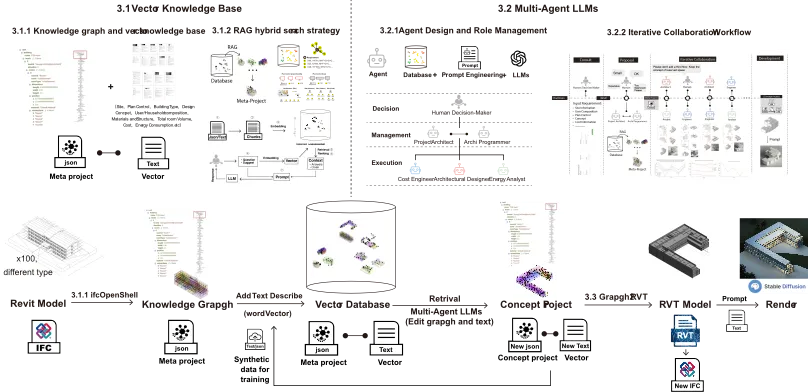
Generation Framework
Title:
Archi-Agents: Approximating the architectural design process with collaborative specialized multi- agent system LLM and building information modeling
Author:
Chao Tang, Kam-Ming Mark Tam and Christiane M. Herr
Keywords:
Generative Design, Building Information Modeling(BIM), Large-Language Model(LLM), Multi-Agent LLM System, Artificial Intelligence, Retrieval Augmented Generation (RAG), Human-Agent Collaboration
Abstract:
Architectural design requires multi-perspective collaboration to balance spatial functionality, cost efficiency, energy performance, and user preferences. Current AI tools, including Large Language Models (LLMs), excel in specific tasks but fail to integrate conflicting considerations into coherent designs due to their lack of role differentiation, collaboration, and adaptability. This paper introduces Archi-Agents, a multi-agent system leveraging fine-tuned Multi-Agent LLMs, a multi-perspective vector knowledge base, and Building Information Modeling (BIM). Specialized agents, including Project Architect, Architectural Programmer, Cost Engineer, and Energy Analyst, collaborate iteratively through a Chatchain-enabled workflow to generate and refine BIM models by integrating spatial, cost, and performance metrics. A multi-perspective vector knowledge base encodes spatial, structural, and performance data to improve retrieval and alignment with design objectives. The system employs a Retrieval- Augmented Generation (RAG) hybrid search strategy, addressing quantifiable (e.g., cost, dimensions) and non-quantifiable (e.g., conceptual intent) aspects of design. Revit Parametric Refactoring translates refined data into interoperable IFC models. Initial results show Archi-Agents efficiently producing cost-sensitive, energy- efficient, and user-aligned designs from natural language inputs. By fostering iterative workflows and human-agent collaboration, Archi- Agents bridges AI precision and human expertise, delivering adaptive, scalable, and user-centric architectural solutions.
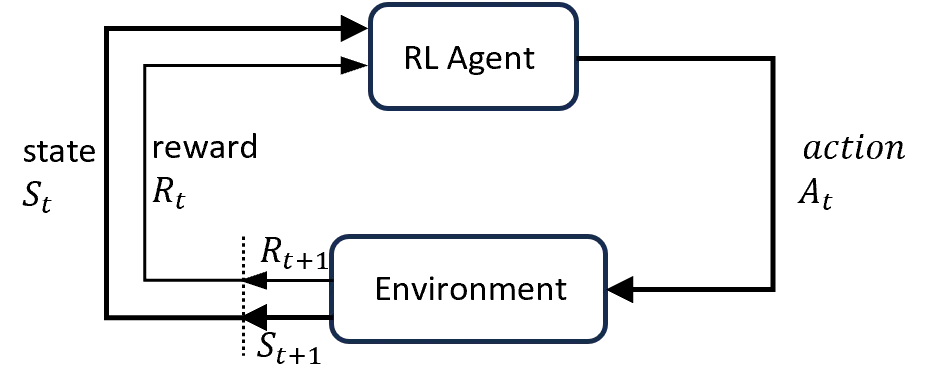
The workflow of RL system
Title:
A workflow for implementing reinforcement learning incorporating occupant preference in climate-adaptive facade control
Author:
Zijie Chen, Chao Tang and Christiane M. Herr
Keywords:
Climate-adaptive facades, Reinforcement learning, Occupant-centric, Naturally ventilated buildings, Individual occupant comfort
Abstract:
Architectural design requires multi-perspective collaboration to balance spatial functionality, cost efficiency, energy performance, and user preferences. Current AI tools, including Large Language Models (LLMs), excel in specific tasks but fail to integrate conflicting considerations into coherent designs due to their lack of role differentiation, collaboration, and adaptability. This paper introduces Archi-Agents, a multi-agent system leveraging fine-tuned Multi-Agent LLMs, a multi-perspective vector knowledge base, and Building Information Modeling (BIM). Specialized agents, including Project Architect, Architectural Programmer, Cost Engineer, and Energy Analyst, collaborate iteratively through a Chatchain-enabled workflow to generate and refine BIM models by integrating spatial, cost, and performance metrics. A multi-perspective vector knowledge base encodes spatial, structural, and performance data to improve retrieval and alignment with design objectives. The system employs a Retrieval- Augmented Generation (RAG) hybrid search strategy, addressing quantifiable (e.g., cost, dimensions) and non-quantifiable (e.g., conceptual intent) aspects of design. Revit Parametric Refactoring translates refined data into interoperable IFC models. Initial results show Archi-Agents efficiently producing cost-sensitive, energy- efficient, and user-aligned designs from natural language inputs. By fostering iterative workflows and human-agent collaboration, Archi- Agents bridges AI precision and human expertise, delivering adaptive, scalable, and user-centric architectural solutions.
Contributed by | Future Ecology Research Group, School of Design, Southern University of Science and Technology
Reviewed by | Li Xu and He Jingzhi
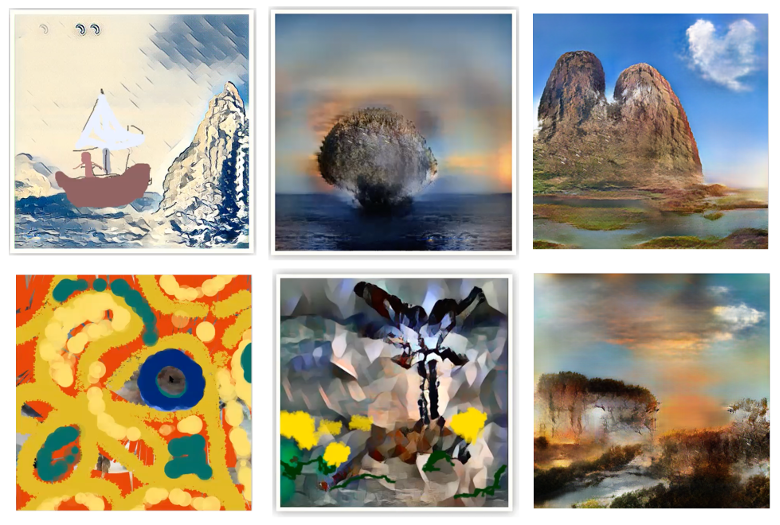
Aug 31. 2022 - Latest News
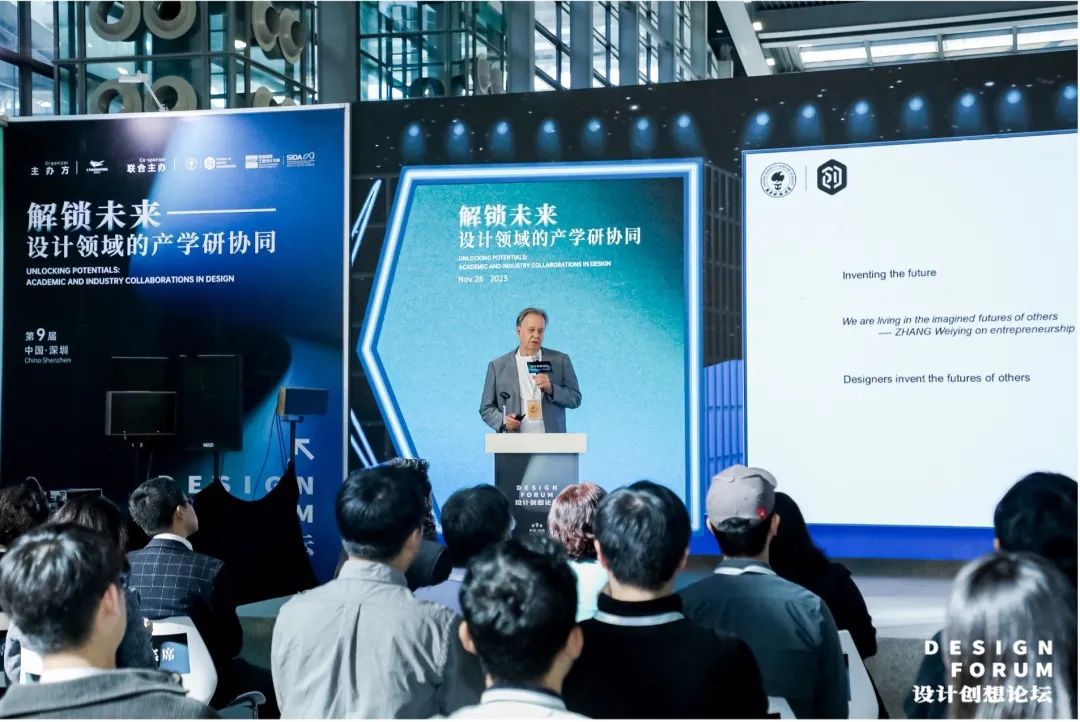
Nov 29. 2023 - Latest News

Sep 9. 2022 - Latest News